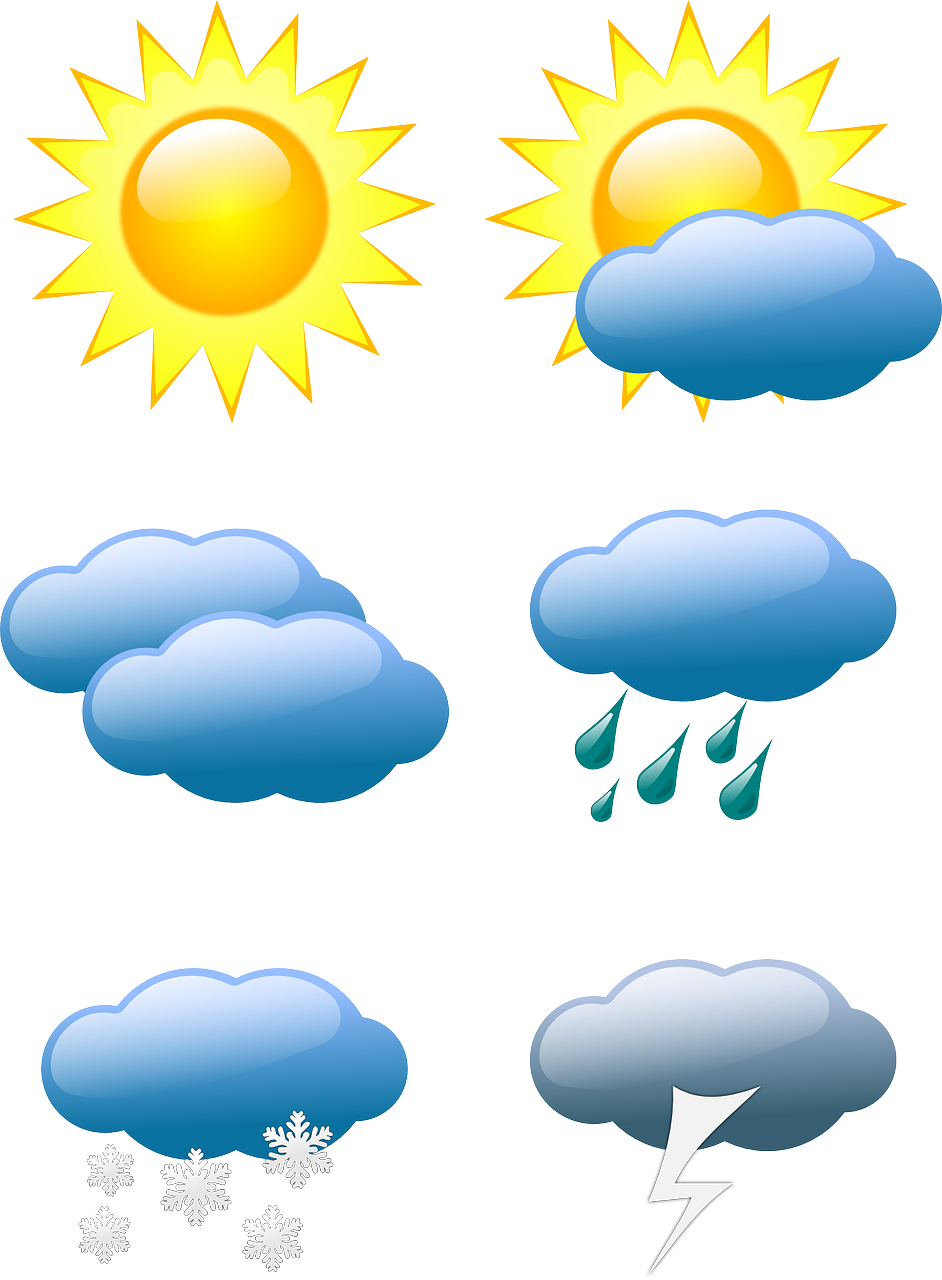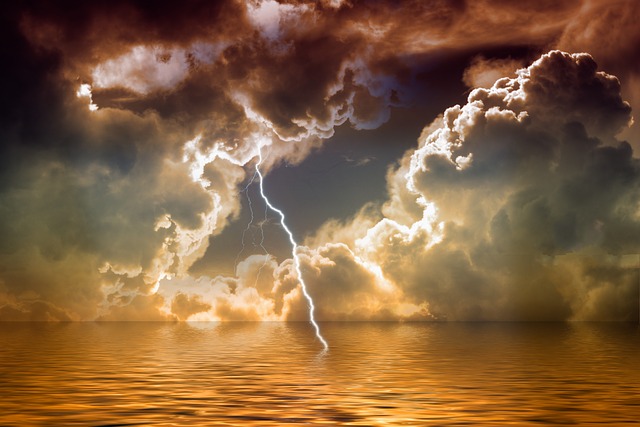Table of Contents
Weather Forecast -Definition
Weather forecast predicts the atmosphere in a particular place using technology and scientific knowledge to type weather explanations. In other words, it’s a method of predicting things like cloud cover, rain, snow, wind speed, and temperature before they occur.
Must you clothe a raincoat or a sweater today? Should you go to the office or effort from home? These are all simple questions we might only be able to answer with the help of a weather forecast. When dangerous weather conditions like hurricanes or snowfalls arrive, our choices about what we should or shouldn’t do can often mean the difference between life and death.
Weather Forecast the prediction of the weather through a request of the principles of physics, supplemented by a variety of statistical and empirical techniques. In addition to predictions of atmospheric singularities themselves, weather forecasting contains forecasts of changes on Earth’s surface caused by atmospheric conditions—e.g., snow and ice cover, storm tides, and floods.
Weather Forecasting in Farming
Most people know that the climate has a critical influence on the agriculture industry. Certainly, crops need the basics of moisture, warmth, and sun to thrive. But what’s less clear is how the details of weather information can drive a grower’s business decisions, helping them plan professionally, minimalize costs and maximize yields—and profits—as a result.
While farmers must make many day-to-day decisions linked to weather situations.
Here are four primary areas of farming that are affected wedged by weather:
Crop Growth/Irrigation: Crop development, or crop yield, involves suitable amounts of moisture, light, and temperature. Detailed and accurate past, real-time and forecast weather information can help farmers better comprehend and track the growth status/stage to make knowledgeable choices. Having access to this data can guide agriculturalists in creating effective and possibly costly options, such as whether, when and how much to water.
Fertilizer Timing and Delivery: One of the numerous choices agriculturalists have to make is determining the proper time to apply fertilizer and the application rate and fertilizer form to use. Weather predictions can be used to ensure that fertilizer is involved in the right conditions—when it’s dry enough so that it doesn’t wash away but moist enough so that it gets worked into the soil. A misapplied application produced by weather can wipe out the entire field’s profits.
Pest and Disease Control: Certain weather conditions inspire the growth and growth of pests and diseases, destroying crops. Forecast guidance incorporated into pest and disease modelling can help determine whether—and when—it’s appropriate to apply pest or disease panels. Wind estimates also play a role in this decision, as crop dusters, aircraft that spray fungicidal or insecticidal chemicals on plants from above, must be utilized when wind conditions are not apt to cause sprayed chemicals to miss their targets.
Measurements and Ideas as the Basis for Climate Forecast
The observations of few other scientific creativities are as vital or affect as many persons as weather forecasting. From the days when early humans expressed from caves and other natural shelters, discerning individuals, in all likelihood, became leaders by being able to detect nature’s signs of impending snow, rain, or wind, indeed of any change in weather. With such information, they must have enjoyed tremendous success in searching for food and safety, the primary objectives of that time.
Early Measurements and Ideas
The primaeval approach entailed insights based on the accumulated experience of the perceptive observer, while modern technology consists of solving equations. Although quite different, there are underlying similarities between both practices. In each case, the predictor asks “What is?” in the sense of “What kind of weather prevails today?” and then seeks to control how it will change to induce what it will be.
Because comments are so critical to weather prediction. An explanation of atmospheric measurements and weather predicting is a story in which ideas and technology are closely intertwined, with creative thinkers drawing new visions from available comments and pointing to the need for new or better measurements. And technology if the means for making new observations and for processing the data derive from measurements.
The Basic Theories of Weather Forecast
The basis for weather estimates started with the theories of ancient Greek theorists. It continued with Renaissance scientists, the scientific rebellion of the 17th and 18th centuries, and the theoretical models of 20th- and 21st-century atmospheric scientists and meteorologists. rajkotupdates.news : us inflation jumped 7.5 in in 40 years Likewise, it tells of the growth of the “synoptic” idea—that of describing the weather over a large region at the same time to organize information about everyday situations.
In synoptic meteorology, simultaneous comments for a specific time plott on a map for a broad area whereby a general view of the weather in that region gain. The so-call synoptic weather map became the principal tool of 19th-century meteorologists and continues to use today in weather stations and on television weather reports worldwide.
Practical Applications in Weather Forecast
Systematic weather records were kept after measuring atmospheric conditions became accessible during the 17th century. Indeed, these early records were mainly by those engaged in agriculture. Planting and harvesting obviously can strategically improve and approve more efficiently if long-term weather patterns can be estimated.
In the United States, the basics of the national weather services were down by American English physicist Joseph Henry, the first head of the Smithsonian Organization. In 1849 Henry form a network of volunteer weather observers to help advance storm prediction in the U.S.
Tools Used for Weather Forecasting
Weather prognosticators use all kinds of tools to attain this goal. We have barometers to measure air pressure, radar to measure the location and speed of clouds. Thermometers to measure temperature and computer models for processing data accumulated from these tools. However, to this day. Humans with good experience can still do a better job at predicting. The weather than computer models alone because humans involve in picking the most appropriate model for a situation.
The main conducts we can forecast the weather contain observing current weather situations. Tracking the motion of air and clouds in the sky, finding previous weather patterns that look like current ones. Examining changes in air pressure and running computer models.
Types of Weather Forecasting
There are four main types of weather prediction we’re going to discuss in this lesson: short-range, medium-range, long-range, and hazardous weather forecasting.
Short-range forecasts made between one and seven days before they happen. Medium-range forecasts are usually given between one week and four weeks in advance. Long-range forecasts are provided between one month and a year in advance.
The first nationwide weather services were provided by the U.S. Army Signal Corps start on February 9, 1870, incorporating Henry’s volunteer weather spectators by 1874. These processes were over by the Department of Agriculture in 1891. By the early 1900s, free mail service and telephone provided daily forecasts to millions of American growers. rajkotupdates.news : us inflation jumped 7.5 in in 40 years. The U.S. Weather Bureau establish a Fruit-Frost Service during World War I. And by the 1920s radio broadcasts to agricultural interests in most states.
Comparing weather conditions by Weather Forecast
weather forecasting is still carried out similar to the earliest persons—namely, making observations and predicting changes. Modern tools to measure temperature, weight. Wind and humidity in the 21st century would certainly amaze them and the results are better.
Yet, even the most sophisticated numerically considered forecast made on a processer requires a set of measurements of the condition of the atmosphere—an initial picture of the temperature, wind, and other essential elements. Somewhat comparable to that formed by our forebears when they looked out of their cave dwellings.
History of Weather Forecasting
The Greek theorists had much to say about meteorology. And many who engaged in weather forecasting undoubtedly used their ideas. However, he did believe that west winds are cold since they blow from the sunset.
The scientific study of meteorology did not grow until measuring tools became available. Its beginning is commonly related to the mercury barometer’s invention by Evangelista Torricelli. An Italian physicist-mathematician. In the mid-17th century and with the nearly concurrent development of a reliable thermometer.
It’s important to note that weather forecasts can change quickly, especially in areas with unpredictable weather patterns, so it’s a good idea to check for updates frequently if you are planning outdoor activities or need to travel.
Conclusion
weather forecast each day over a week and record details about what vocabulary they hear and the weather. Students should follow the directions below while watching the weather each day and record their findings in the table. Then, answer the analysis questions and reflect on the weather forecasts. Students should have access to a television news network or the internet to complete this activity.


